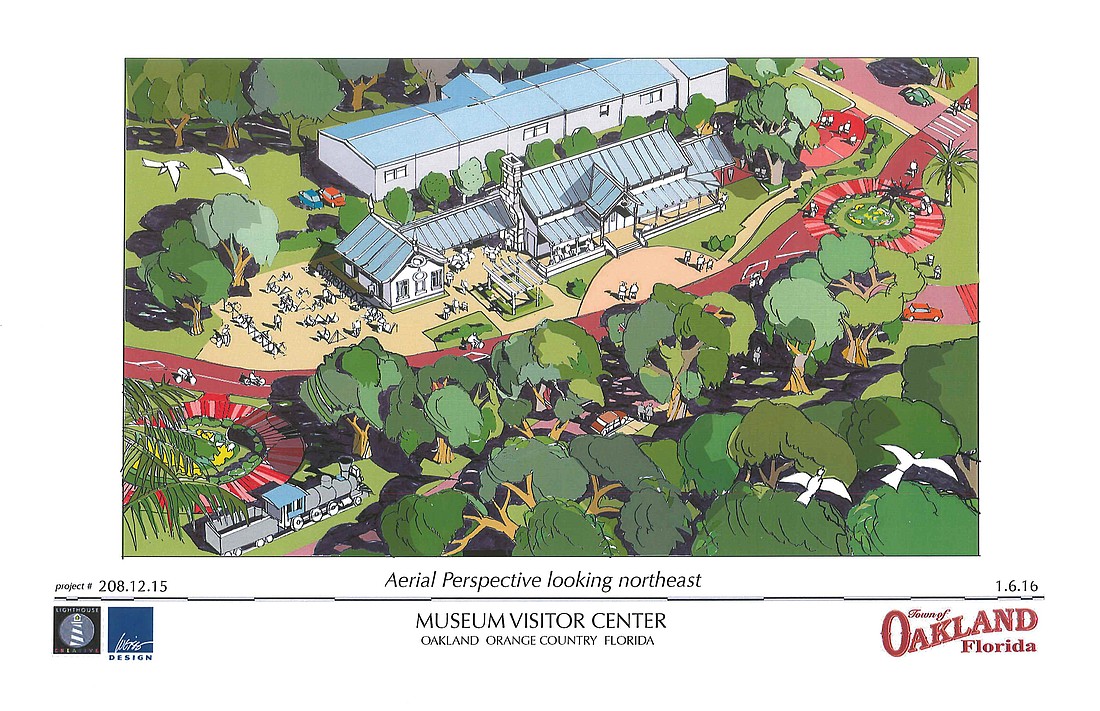- February 20, 2025
-
-
Loading

Loading

Oakland is bringing a cultural addition to its town center with a new museum slated for the land on Tubb Street previously occupied by the Little White House. The Orange County Arts and Cultural Affairs Department recently approved a $225,000 grant to get the project moving forward.
“The Orange County Commission officially approved funding for what many believe will become an iconic symbol of the town’s history, its culture and its people,” said Mike Parker, Oakland’s Public Works director.
The county provides funding each year for projects that promote the arts and cultural facilities. The proposed projects are ranked by the United Arts of Central Florida for the impact they might have.
The Oakland Art and History Center was ranked fifth out of about a dozen applicants and received $225,000.
“We are very grateful to the Orange County Arts and Cultural Affairs Department for the grant, which will help us build Oakland’s Art and History Center,” Mayor Kathy Stark said. “This building will look much like the Little White House and will serve many practical purposes. The town staff and commission worked very hard to make sure this grant request was ready to be considered and will continue to work on this project until it is complete.”
The grant, with funding by tourism tax dollars, is a matching grant, so the town must come up with the remainder, possibly through a municipal bond or a short-term bank loan or mortgage.
“The town is reviewing all options to fund the remainder of the cost and will ultimately make the most appropriate and fiscally responsible decision,” Parker said.
The first phase is expected to include the museum, a small concession stand and public restrooms. Parker said he anticipates that phase to cost approximately $500,000.
“Because of the huge benefit in having public restrooms along the West Orange Trail, Oakland staff have also engaged Orange County officials in discussions pertaining to financial assistance,” Parker said.
A consulting firm is working on the final architectural style and design elements.
The town envisions the Oakland Art and History Center as a place for a multi-segment exhibit hall filled with historical town photographs and artifacts for public display Wednesday through Sunday, during normal operating hours. It will include chronological segments such as town founders, trains and the growth of Central Florida, the town, citrus, the Oakland Nature Preserve and Oakland today and in the future.
The building will also reflect various aspects of the many styles of architecture that prevailed throughout Oakland’s history.
“Incorporating the styles brought here by Russian immigrants in the mid 1800s, the charms of the Victorian and Elizabethan eras and the ‘Florida Cracker’ look of the 20th century, the building will certainly be a testament to the past,” Parker said.
The pillars at Grace Park are being incorporated in the area’s design. The original landscaped park was sponsored by Oakland residents Charles F. and Grace Mather-Smith following the 1912 fire that destroyed many of the wooden stores in downtown Oakland.
About 250,000 users on the West Orange Trail annually have passed by those historic pillars, which contribute to the small-town charm of Oakland town center. Upon the facility’s completion, these walkers, runners, cyclists and skaters will also have a place to grab a concession snack or use the restroom.
The town hopes the new space will draw greater attention to the arts and culture of the area. Primarily a museum open five days a week, the center will also provide civic spaces for children and adults at differing times of the evening.
A timeline for construction has not been established, but town officials expect the main facility to be completed in 2018.
The town-owned Little White House was demolished in 2013 because it would have been too costly to bring it up to code.
The town worked for years to determine if the building was a Section House built around 1887, the time of the town’s birth, when the railroad was built. Some town historians say it was, but others say it was simply a home built six or seven decades ago for two sisters who served as domestic help for the pioneer Sadler family.
Either way, when the town assumed responsibility for the building about six years ago, the structure was moved from its original location and lost any historical value, according to town officials.
Contact Amy Quesinberry Rhode at AQRhode@orangeobserver.com.